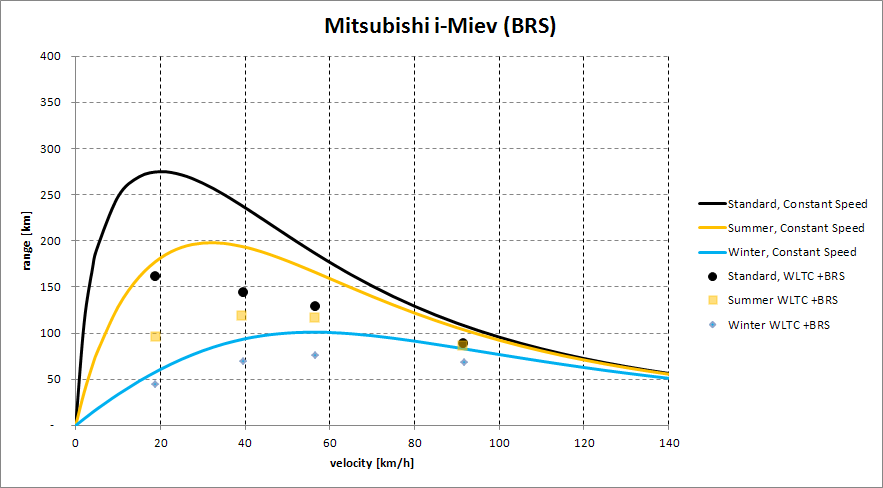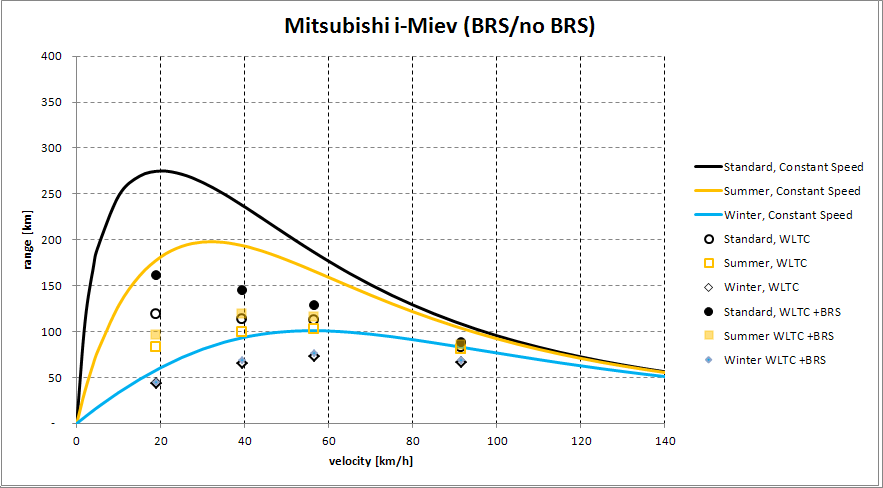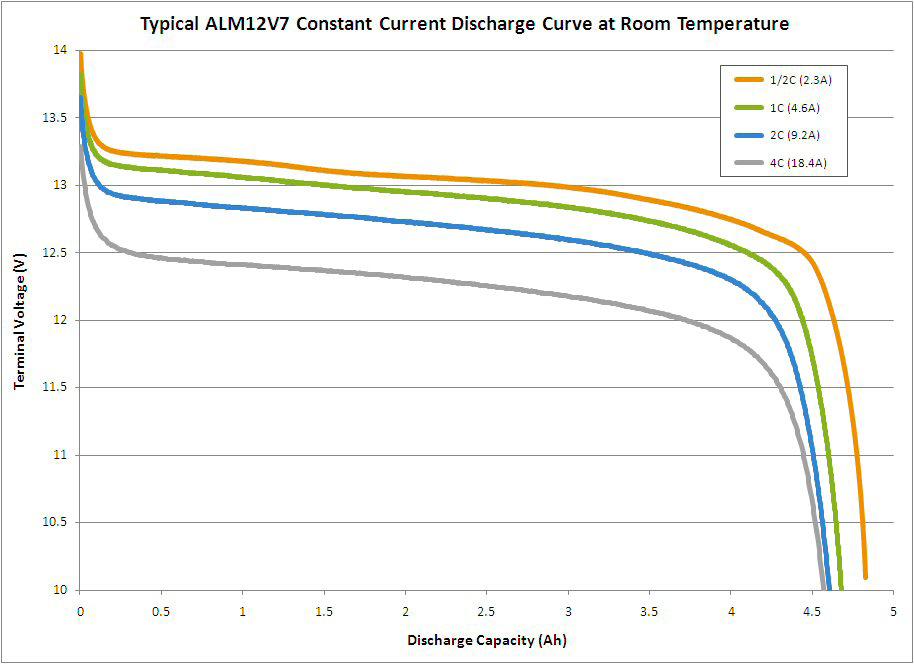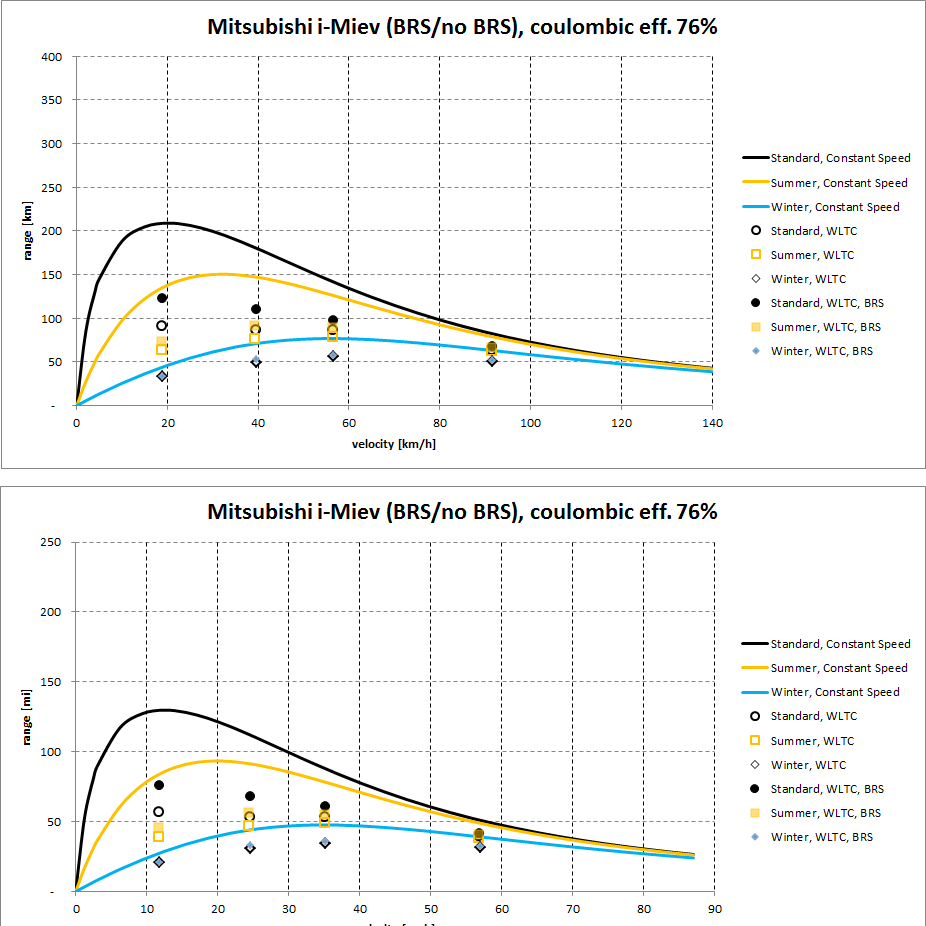Thanks to this additional paper http://www.empa.ch/plugin/template/empa/*/135716/---/l=1 I was able to draw a much more interesting chart:

These are ranges in World Lightduty Test Cycle, both at standard temperature (23°C), winter temperature (-7°C) and summer temperature (35°C). It results that A/C requires around 1 kW, while heating arrives up to 4 kW!
Here we can also see how much inertia accounts in real range, as if you go at low speed, it means you're in town, and this mean continuous starts&stops; in this situation, up to 40% of the energy from the battery is used to accelerate car, and not all of this energy can be recovered by the Brake Recovery System: some of these systems have just 70% efficiency (=28% energy recovered), although I read about some reaching 90% (=36%).
At higher speeds (highway driving) actual range comes closer to max theoretical range.
Comparison between BRS present / not present:

We can see here how BRS is "useless" in winter, as the percentage of energy recovered by the system is negligible w.r.t. energy "wasted" by heater.
So the black curve must be considered just as a major theoretical limit: by sure you'll be never able to go ABOVE that limit, but it is also sure you'll ussually be way below it.
From these charts I think we can conclude that minimum "guaranteed" range for iMiev is 45 km in heavy-traffic cities, where average speed is around 20 km/h, and 60km in "better" cities.
Although it could appear as a low range, actually it is ABOVE the 30 km which some studies state being the average daily-trip length for a typical driver (sorry, can't find a source).

These are ranges in World Lightduty Test Cycle, both at standard temperature (23°C), winter temperature (-7°C) and summer temperature (35°C). It results that A/C requires around 1 kW, while heating arrives up to 4 kW!
Here we can also see how much inertia accounts in real range, as if you go at low speed, it means you're in town, and this mean continuous starts&stops; in this situation, up to 40% of the energy from the battery is used to accelerate car, and not all of this energy can be recovered by the Brake Recovery System: some of these systems have just 70% efficiency (=28% energy recovered), although I read about some reaching 90% (=36%).
At higher speeds (highway driving) actual range comes closer to max theoretical range.
Comparison between BRS present / not present:

We can see here how BRS is "useless" in winter, as the percentage of energy recovered by the system is negligible w.r.t. energy "wasted" by heater.
So the black curve must be considered just as a major theoretical limit: by sure you'll be never able to go ABOVE that limit, but it is also sure you'll ussually be way below it.
From these charts I think we can conclude that minimum "guaranteed" range for iMiev is 45 km in heavy-traffic cities, where average speed is around 20 km/h, and 60km in "better" cities.
Although it could appear as a low range, actually it is ABOVE the 30 km which some studies state being the average daily-trip length for a typical driver (sorry, can't find a source).



























